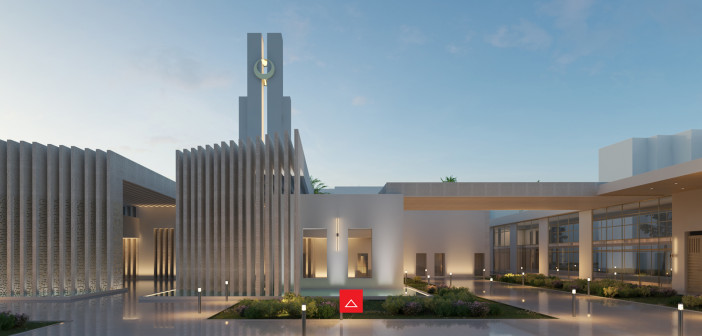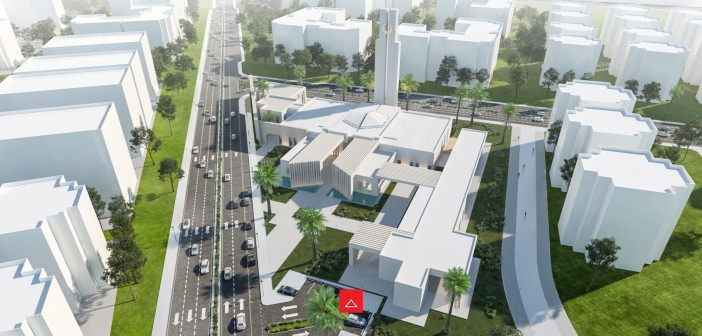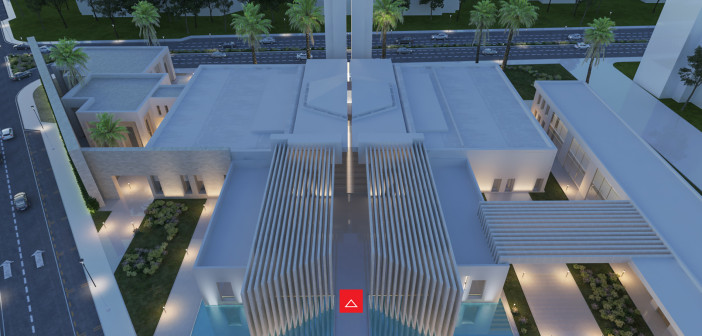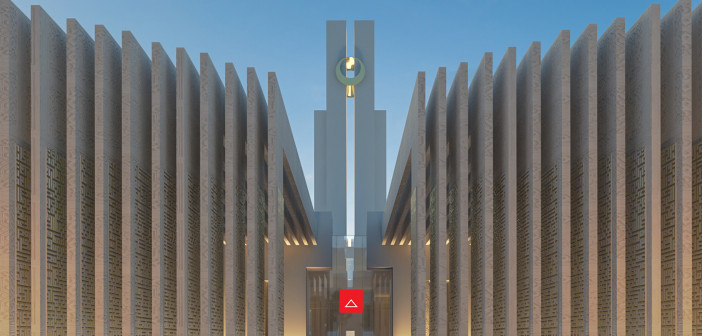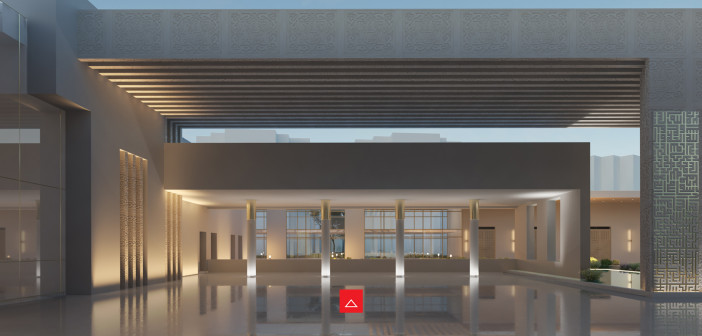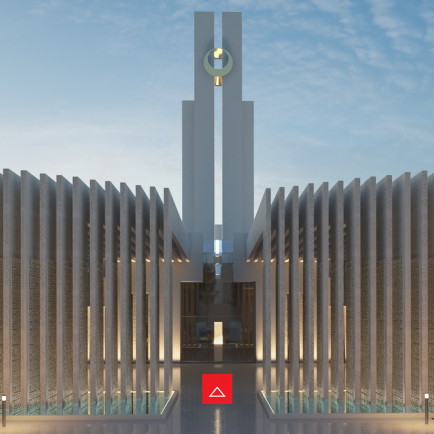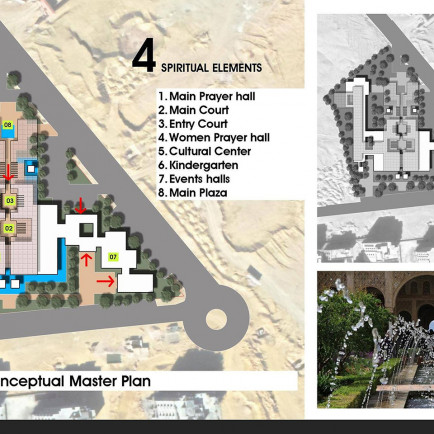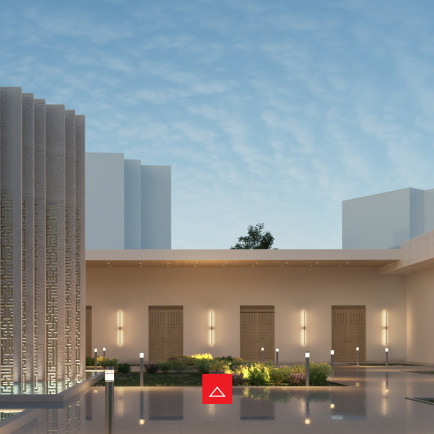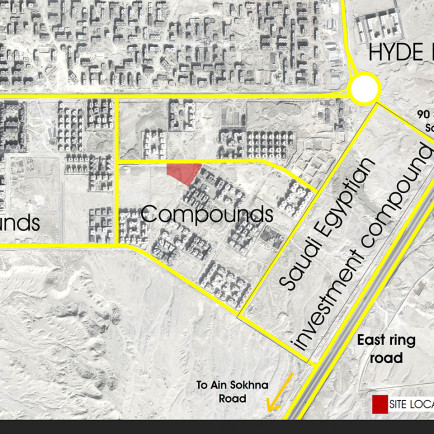BELKAID MOSQUE
Urban and Architectural
Located in the heart of Cairo, Egypt, Belkaid mosque provides space for 4000 worshippers to congregate for prayer. Its design allows the elements of nature to be experienced by enabling sunlight to pierce through the glass windows and circular holes constructed in the dome. This creates a powerful ambiance to the interior space, allowing worshippers to feel at peace when praying. Strategically, the mosque also features recessed lighting on the ground to make the hall feel balanced and inviting to all visitors.
Seeking the concept of an “outdoor mosque,” the design strives to represent hospitality and openness by allowing worshippers to feel the beauty of nature in their surroundings. This response is delivered by dividing the mosque in half and including floor-to-ceiling windows, allowing natural light to illuminate the indoor space and providing the worshipers with a view of the greenery surrounding the area.
The Nave (sahn) not only serves a psychological purpose for transitioning the visitors from the busy streets of the district to the peaceful space for worship, but also acts as a functional purpose for allowing more room into the area. This design technique enables thousands of people to gather and pray comfortably, especially during the month of Ramadan.
Conceptually, the objective of the design is to allow worshippers to feel the presence of God while praying. Therefore, each element was carefully designed to amplify the spiritual and aesthetic sense of the space.
Reflecting the thirty Holy Quran chapters, Belkaid mosque features thirty louvers set on water in its façade. They were consciously designed to seam narrow in order to direct visitors to the prayer hall. Additionally, the use of floor luminaires allows the structure to reflect on the water, which further highlights the beauty and purity of the environment.
Description
References
| https://cubeconsultants.org/portfolio/alandalus-mosque/ |
Details
Location
XG7M+HQ8, New Cairo 3, Cairo Governorate 4717344
Worshippers
4000
Architect Name
Year of Build
designed 2020 under construction till now
Area
12,396.70 m2
Drawings
Map
Urban and Architectural
Located in the heart of Cairo, Egypt, Belkaid mosque provides space for 4000 worshippers to congregate for prayer. Its design allows the elements of nature to be experienced by enabling sunlight to pierce through the glass windows and circular holes constructed in the dome. This creates a powerful ambiance to the interior space, allowing worshippers to feel at peace when praying. Strategically, the mosque also features recessed lighting on the ground to make the hall feel balanced and inviting to all visitors.
Seeking the concept of an “outdoor mosque,” the design strives to represent hospitality and openness by allowing worshippers to feel the beauty of nature in their surroundings. This response is delivered by dividing the mosque in half and including floor-to-ceiling windows, allowing natural light to illuminate the indoor space and providing the worshipers with a view of the greenery surrounding the area.
The Nave (sahn) not only serves a psychological purpose for transitioning the visitors from the busy streets of the district to the peaceful space for worship, but also acts as a functional purpose for allowing more room into the area. This design technique enables thousands of people to gather and pray comfortably, especially during the month of Ramadan.
Conceptually, the objective of the design is to allow worshippers to feel the presence of God while praying. Therefore, each element was carefully designed to amplify the spiritual and aesthetic sense of the space.
Reflecting the thirty Holy Quran chapters, Belkaid mosque features thirty louvers set on water in its façade. They were consciously designed to seam narrow in order to direct visitors to the prayer hall. Additionally, the use of floor luminaires allows the structure to reflect on the water, which further highlights the beauty and purity of the environment.
Description


